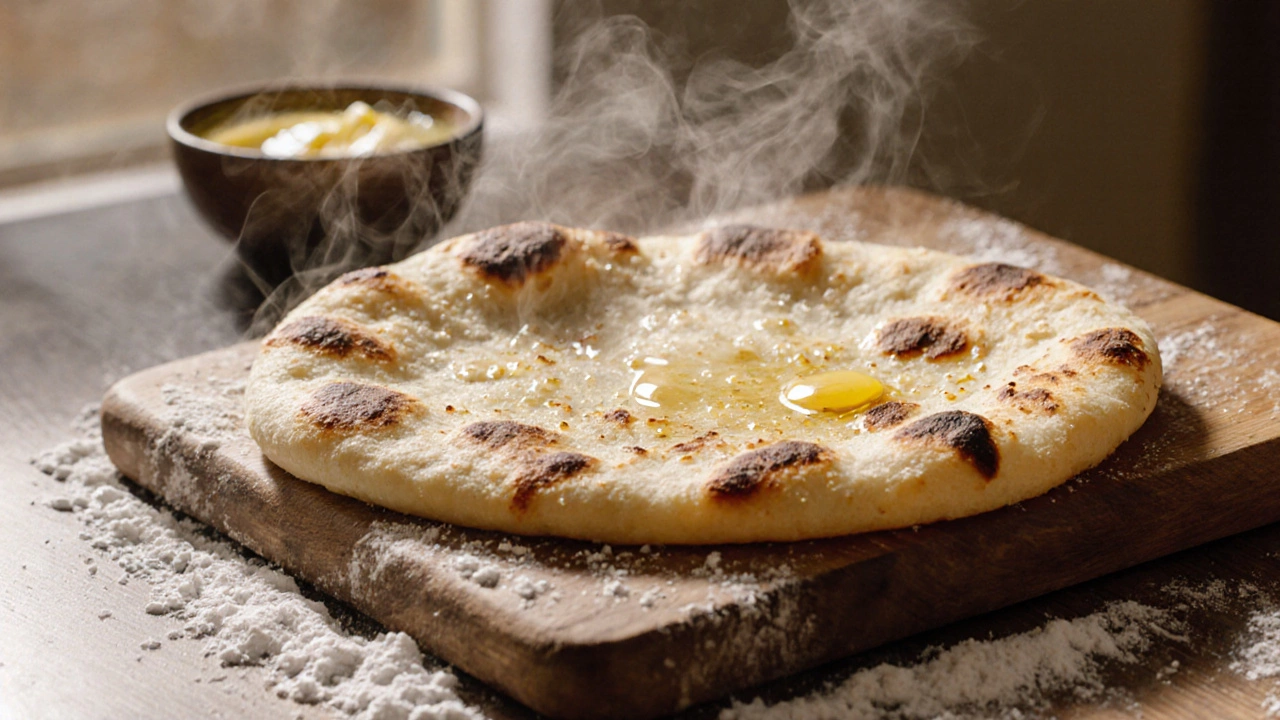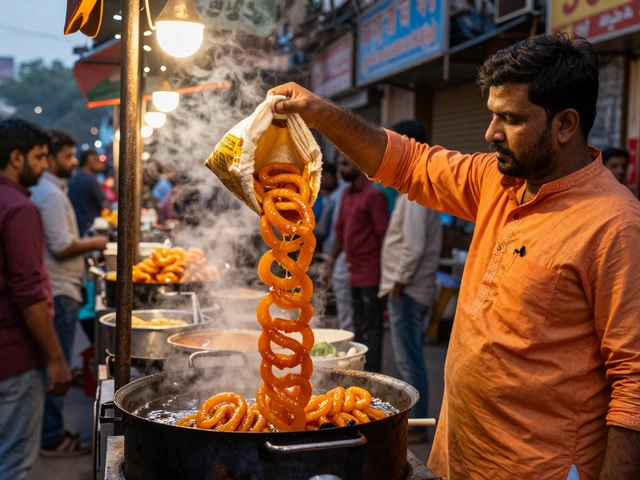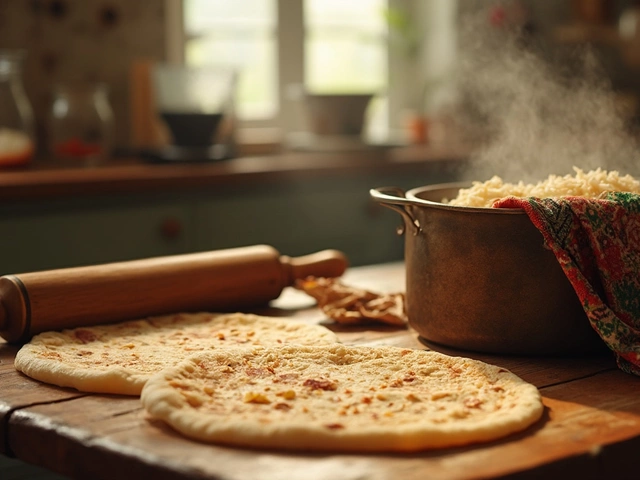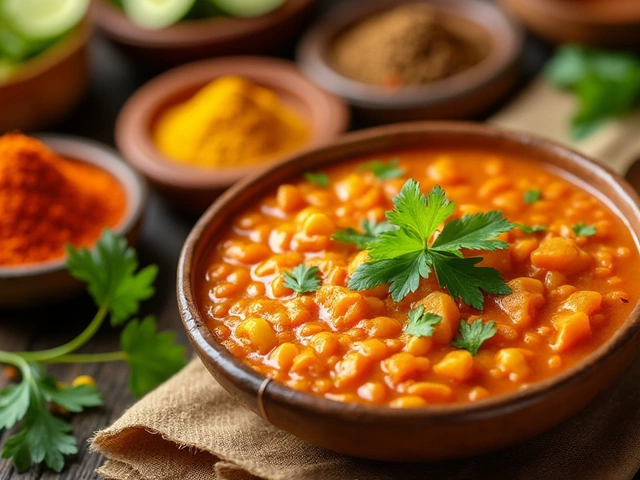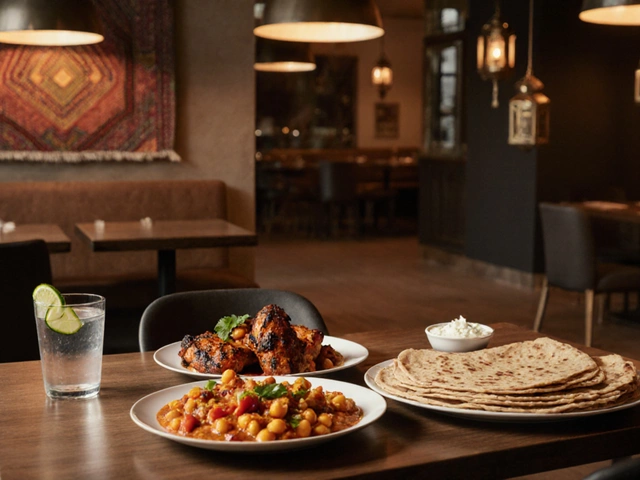Naan vs Roti Nutritional Calculator
Calculate Your Nutrition Impact
See how many extra calories and carbs you're consuming by choosing naan over roti
Naan is soft, fluffy, and buttery - it’s the bread that makes curry taste better, soaks up sauces like a champ, and turns a simple meal into something special. But here’s the thing: just because it’s delicious doesn’t mean it’s perfect. If you eat naan regularly, especially the kind you get from restaurants or frozen packs, you’re probably not aware of the hidden downsides. Let’s cut through the hype and talk about what naan actually does to your body, your wallet, and your kitchen.
It’s Loaded with Refined Flour
Most naan is made with white flour - the kind stripped of bran and germ during processing. That means it’s mostly starch with almost no fiber. A single piece of naan (about 100g) has 20 grams of refined carbs and less than 1 gram of fiber. Compare that to roti made from whole wheat atta, which gives you 4-5 grams of fiber in the same size. That fiber gap matters. Without it, your blood sugar spikes fast, then crashes an hour later. You feel hungry again sooner. You reach for another piece. And another. It’s not just about calories - it’s about how your body handles them.
High in Calories and Fat
Naan isn’t just flour. It’s usually brushed with ghee, butter, or oil - sometimes both. That’s where most of the calories hide. One plain naan can be 250-300 calories. The garlic or butter naan you get at restaurants? That’s often 400-500 calories. That’s more than a whole plate of brown rice and dal. And if you’re eating two or three pieces with your meal? You’re easily adding 1,000 extra calories without even realizing it. No wonder people say Indian food is “heavy.” It’s not the spices - it’s the bread.
It’s Not Gluten-Free
Naan is made with wheat, which means it’s full of gluten. If you have celiac disease, non-celiac gluten sensitivity, or even just a sluggish digestive system, naan can cause bloating, gas, or stomach pain. You might not connect the dots - you think it’s just the curry. But try eating the same meal with roti or rice instead, and you’ll notice the difference. Gluten isn’t bad for everyone, but for a growing number of people, it’s a trigger. And naan? It’s one of the most common gluten-heavy foods in Indian meals.
It’s Often Made With Sugar and Dairy
Here’s something most people don’t know: many naan recipes include sugar. Not a pinch - sometimes a full tablespoon. Why? To feed the yeast and make it rise faster. You won’t taste it, but it’s there. And then there’s the dairy. Yogurt, milk, or even sour cream are often added for softness. That’s fine if you’re not lactose intolerant. But if you are, naan can cause bloating, cramps, or diarrhea. You might blame the curry, the onions, or the oil - but it’s the naan. And if you’re trying to cut sugar or dairy for health reasons, naan is one of the sneakiest culprits.
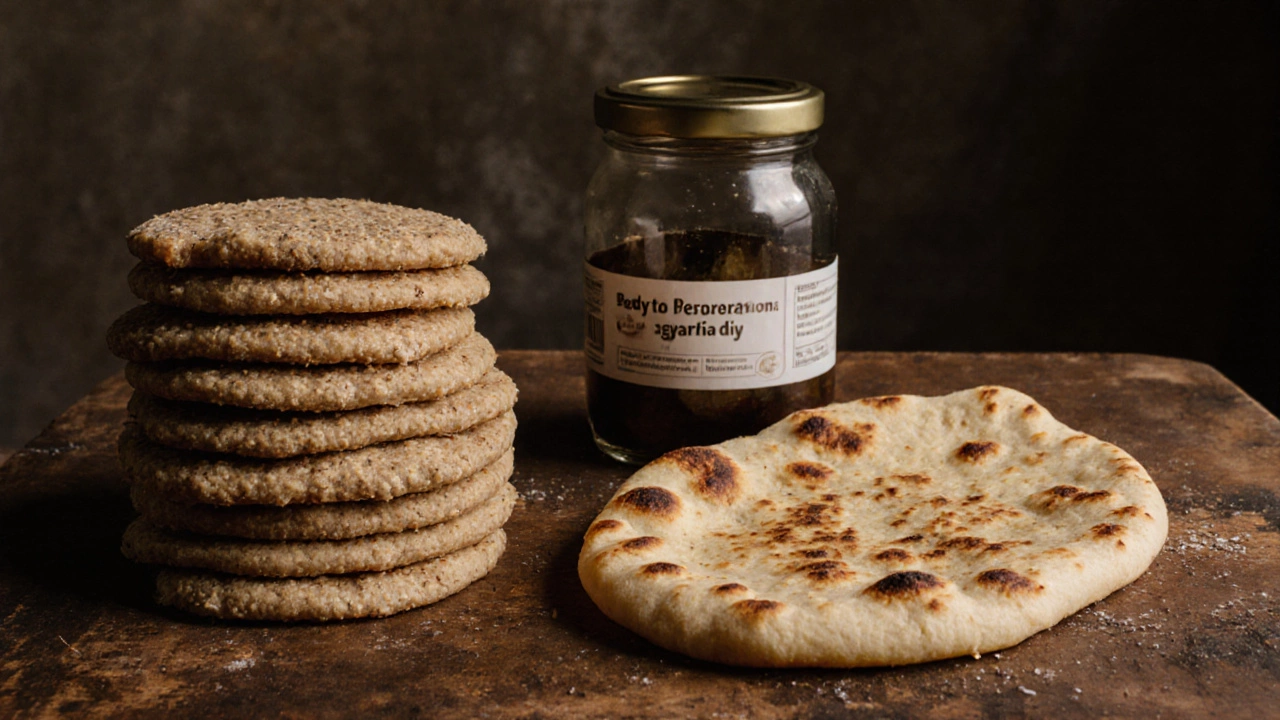
It’s Not Practical for Daily Eating
Naan takes time to make. You need yeast, time to proof, a tandoor or a very hot pan, and some skill to get it right. Even store-bought naan needs reheating. That’s fine for weekends or special meals. But if you’re making it every day? It’s a hassle. Roti? You can make 10 in 15 minutes with a rolling pin and a gas stove. Rice? Just boil it. Naan doesn’t fit into a busy weeknight routine. And if you’re trying to eat more whole foods, naan doesn’t help. It’s a treat - not a staple.
It’s Often Overpriced
At Indian restaurants, a basket of naan costs $3-$5. In supermarkets, a pack of four frozen naans runs $4-$6. That’s more than a kilo of rice or a bag of whole wheat flour. And you’re paying for convenience, not nutrition. For the same price, you could buy whole wheat flour, make your own roti, and have 20 pieces with way more fiber and less fat. Naan is a luxury. It’s not a budget-friendly food. If you’re watching your grocery bill, it’s one of the first things you should cut.
It Doesn’t Pair Well With Healthy Eating Goals
If you’re trying to lose weight, manage diabetes, or lower cholesterol, naan is not your friend. It’s high glycemic, high fat, and low in nutrients. It doesn’t fill you up the way lentils, vegetables, or whole grains do. You eat it because it tastes good, not because it’s good for you. And that’s okay - once in a while. But if it’s part of your daily plate, you’re undermining your health goals. Roti, brown rice, or even quinoa give you the same texture and satisfaction without the sugar crash or bloating.
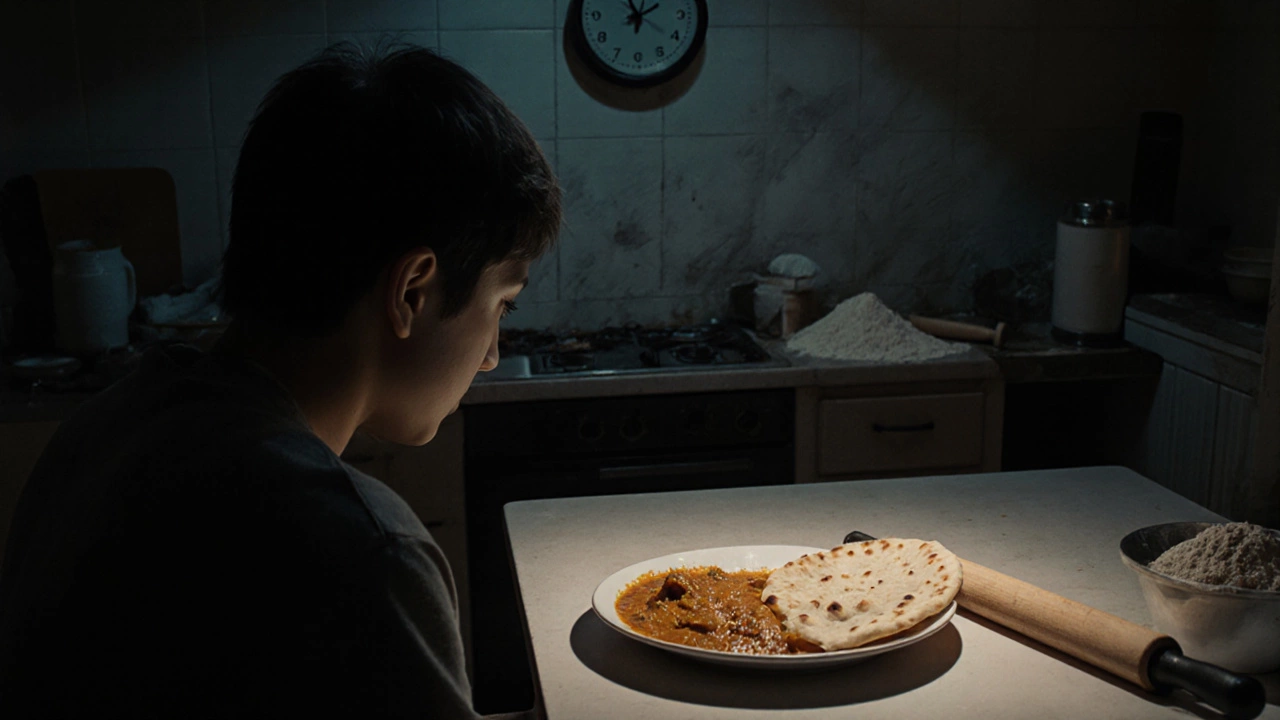
It’s Not Always Fresh - Even When It Looks Like It Is
That soft, warm naan you get at the restaurant? It might have been sitting under a heat lamp for hours. Frozen naan? It’s often loaded with preservatives and hydrogenated oils to keep it shelf-stable. Even the “artisan” brands you buy in fancy stores might have additives like dough conditioners, emulsifiers, or high-fructose corn syrup. You’re not getting a traditional bread. You’re getting a processed food disguised as comfort. Read the label next time - you’ll be surprised.
What Can You Do Instead?
You don’t have to give up naan completely. Just make it smarter. Have it once a week - not every day. Make your own with whole wheat flour, skip the sugar, use a light brush of olive oil instead of ghee, and bake it on a hot skillet. Or better yet, switch to roti for most meals. Try making multigrain roti with oats, flax, or millet. It’s just as easy, way more filling, and better for your gut. You’ll still get that satisfying chew - just without the guilt.
Naan Has Its Place - But Not Every Day
There’s nothing wrong with enjoying naan. It’s part of a rich food culture. It’s meant to be shared at celebrations, dipped in rich curries, or eaten fresh off the flame. But treating it like a daily carb source? That’s where the problems start. The real magic of Indian food isn’t in the bread - it’s in the spices, the lentils, the vegetables, the balance. Naan is the garnish, not the main course. When you stop seeing it as a necessity and start seeing it as a treat, you’ll eat less of it… and feel better when you do.
Is naan healthier than roti?
No, roti is generally healthier. Roti is usually made from whole wheat flour with no added sugar or fat. Naan often uses refined flour, butter, yogurt, and sometimes sugar - making it higher in calories, carbs, and unhealthy fats. Roti has more fiber and fewer additives, so it keeps you full longer and supports better blood sugar control.
Can I eat naan if I’m trying to lose weight?
You can, but sparingly. One small piece of plain naan might fit into a meal plan if you cut back on other carbs like rice or fried snacks. But butter naan or restaurant-style naan? Those are high in calories and won’t help you feel full. For weight loss, swap naan for roti or brown rice. You’ll eat fewer calories and stay satisfied longer.
Why does naan make me bloated?
Naan can cause bloating for a few reasons. It’s made with wheat, which contains gluten - a common trigger for digestive discomfort. It also often includes dairy (yogurt or milk), which can upset people who are lactose intolerant. Plus, the sugar and preservatives in store-bought naan can ferment in your gut, creating gas. Try switching to gluten-free roti or rice to see if your symptoms improve.
Is frozen naan bad for you?
Many frozen naans are loaded with preservatives, hydrogenated oils, and added sugar to extend shelf life and improve texture. They’re not bad in small amounts, but they’re far from healthy. Always check the ingredient list. If you see things like sodium stearoyl lactylate, mono- and diglycerides, or high-fructose corn syrup, it’s better to make your own or choose roti instead.
Does naan have more calories than rice?
Yes, typically. One cup of cooked white rice has about 200-220 calories. One medium naan has 250-400 calories, depending on how much butter or ghee is added. So if you’re eating one piece of naan with your meal, you’re often taking in more calories than you would with a full cup of rice. Plus, naan doesn’t fill you up as well, so you might end up eating more overall.





